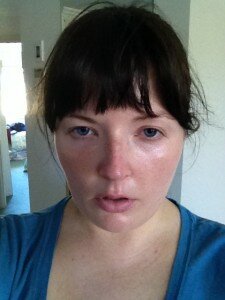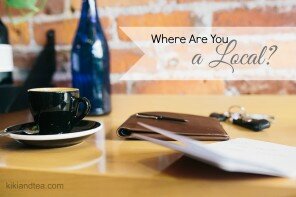(As Told By Someone Whose Ancestors Should Have Never Left Northern Europe)
So we all know that Australia is famous for it’s lovely beaches and balmy weather but I am beginning to believe that the ideal of Australian summer has become something that has been photoshopped and sold to us by soft drink and ice-cream companies. So I feel, as someone who has absolutely no romanticised notions of summer, that I need to let everyone know what summer in Australia is really like.

This is what advertisers want you to think summer looks like
First of all the sun is insanely strong. To tell how strong the sun is in a country all you have to do is look at the colour of the native population. The darker they are the stronger the sun, and to remind everyone, Australia’s indigenous population are very dark. So if you are at all lighter than that you face the risk of melanoma anytime you let a single summer ray touch your skin. If you suffer the misfortune to be bred from the stock of countries where it’s lucky for the sun to be showing two days straight, like I do, venturing into the full Australian summer sun will see you burnt bright red in five minutes flat. My personal worst sunburn involved actual blisters and heat stroke. Sunscreen only works if applied thickly and correctly, at least half an hour before exposure, and then reapplied every two hours. Spontaneous trips to the beach? Not so much.

This is a more accurate representation of what summer looks like
The beach itself isn’t actually all that pleasant in summer either, at least not between the hours of 10 AM and 4 PM. There is no natural shade on a beach, and the reflections from the water mean double exposure to the deadly sun. The sand itself is often at near molten lava temperatures. And if you want to avoid the midday sun it’s important to note that you shouldn’t swim at dawn, dusk, or when it’s overcast because of the increased risk of being bitten by a shark. If you’re in the north of Queensland you can’t swim at the beach at all in summer due to blue bottles and their propensity to give you incredibly painful stings.
Most beaches are so crowded that if you’re not a fan of stranger touching then neither the sand nor the water are a place for you. Not to mention the fact that all public bathrooms at the beach are experiences where you’ll have to line up for a toilet with no seat, you’ll be wondering whether the wet floor is due to water or urine, the single ply paper will either tear at the worst possible moment or be waxy (if you get toilet paper at all), the lock will leave you paranoid about that noisy child who can’t wait and might break in, there will be no soap to wash your hands, and when you’re done you will wish to bathe in hand sanitiser.
Plus the beach is a place where most people wear scant clothing, that might seem attractive to people who want to do some discrete ogling, but most people who go to the beach do not look like models. There are a lot of people with leather skin whose outfit is small enough to give you way too much information. (And no, you don’t have any right to judge them or insist they wear more clothes because they’re unattractive to you.)

What most beaches usually look like. Photo: Jenson Lee Flickr Commons
There are a lot of beautiful secluded swimming spots but only if you’re willing to do a fair amount of walking to get to them. The amount of water you’ll need to carry not to pass out of dehydration during the walk will weigh you down a fair bit. You can’t really stay for an extended amount of time because there are no bathrooms and the hike back in heat that would challenge a professional athlete will negate any nice cooling effects the swim did for you in the first place.
The other option for a swim is a public pool, but the water will be too warm to be at all cooling, you will be kicked by a member of the public and the entire time you’ll be wondering how many people have just urinated in the pool rather than going through the extremely difficult task of going to the bathroom while wearing wet clothing that will neither come off your body or go back on without a fair amount of effort.
But swimming is one of your only recourses against the heat.
There are two types of heat in Australia:
In the south of Australia and inland it is a dry heat, and can frequently get over 40 degrees celsius. In a particularly bad summer I spent in Albury (a town half way between Sydney and Melbourne) it didn’t go under 40 degrees day or night for a week. In that heat you need to be drinking AT LEAST two litres of water a day (and water, not juice or soft drink), there will be a constant salt crust of your dried sweat on your face, and a five metre walk in the sun will leave you feeling like a raisin. But it is liveable if you sit in the shade in front of a fan and eat/sip on something cold. Most of the time it will cool off quite a bit over night.

Yes that’s me hiding with the galangal and shallots
The second type of heat is humid. Sydney gets both humid and dry hot weather, the further north you go from that the more humid it is. Humid weather rarely goes above 35 degrees Celsius, but this is a mercy of God. The shade is barely cooler than in the sun. Unless you’re some kind of mutant you will sweat even if you aren’t exerting any kind of physical energy. A sweaty face means putting on make up is impossible. If you have humidity affected hair you can’t do anything with it but tie it back and hope no one judges you too harshly for the halo of fly-aways that no hair spray will keep down. You will feel like you need another shower after you attempt to dry yourself off after your first one. Bread will go mouldy if left unrefrigerated in one day, and your cheese will sweat as much as you do. It won’t be much cooler at night and sleeping will be an exercise in tossing and turning to try to find a cooler part of the bed. It will drain your energy quicker than that of a smart phone battery. It is like living in a sauna you can’t get out of.
In humidity air-conditioning is super effective and makes you feel wonderful, until you see the electricity bill for it. A heating bill is never so high. The heat is so bad that might find yourself hiding with the cold veggies while grocery shopping just for a bit of relief.
If that doesn’t sound so bad to you, if you like being sweaty and outdoorsy I might need to remind you that from about Sydney and north of that the climate is such that we get most of our precipitation in summer. No seriously. That’s what happens when you live in the tropics and subtropics. Unless you’re in the area of Melbourne, Adelaide, Perth or Hobart you’re more likely to be cooped up inside on a rainy day in summer than winter. So whenever a Sydney or Brisbane weather presenter says something stupid like “We’ll see when this rain stops and we can get back to summer weather.” You just feel like yelling at the television “How do you forget that this happens every year?” These places will be at high risk of flash flooding, the places with a dry sunny summer at high risk of bush fires. It’s unusual to have a whole summer without one place being on fire while another is underwater.
So maybe all this hot weather and summer storms doesn’t seem so bad if your only plans are to sit under an umbrella by the pool eating ice blocks. But most of this weather happens in February when the public holidays are over and most people have to go back to work. Back to work in professional attire. What does professional attire mean? Usually a long sleeved shirt and a dress jacket, a tie if you’re a man. This is not comfortable when it’s over 28 degrees Celsius. And no amount of antiperspirant will be able to stop those sweat patches under your arms.
Also if you rely on public transport your nose will quickly realise how many people don’t shower as much as they should. In winter this is masked by jackets and the general fact that when it is cooler people can have longer between showers without smelling.
And the bugs. All summer you will wage a war with the ants, the spiders, the mosquitoes and other insects to keep them out of your house. You will not know how they got in and you will not know how to get them out. You will be plagued in the dark with the buzzing of flies and mosquitoes and awake to find that they seemingly bit you through the covers. The cicadas will at least stay out of your house but they will try to deafen you with their collective buzzing.
But don’t let the summers turn you off Australia altogether, we do still have lovely beaches, and very mild winters. Just don’t let those commercials trick you into thinking that any where in Australia is pleasant in February.








